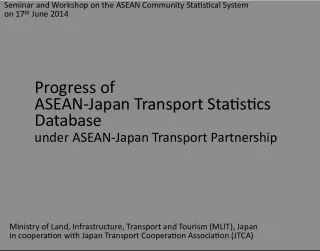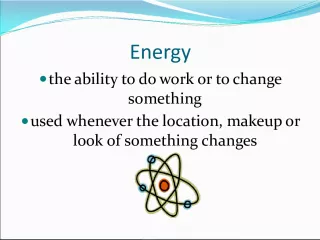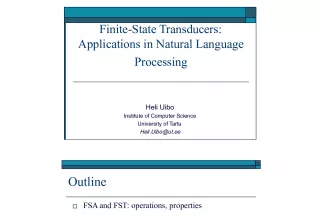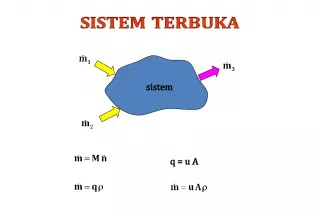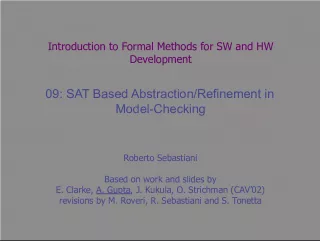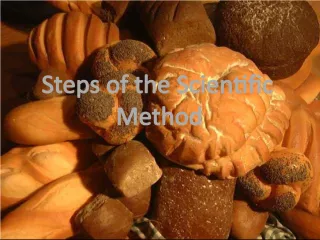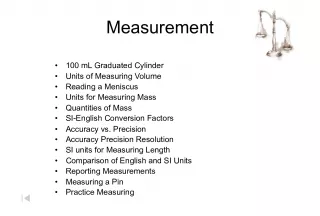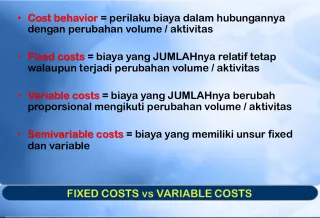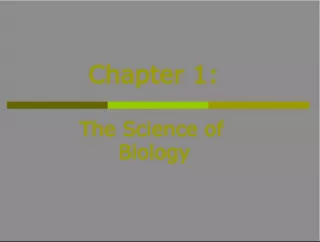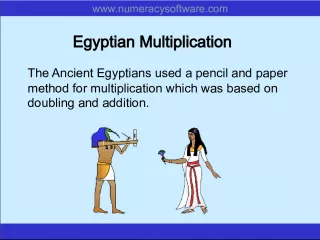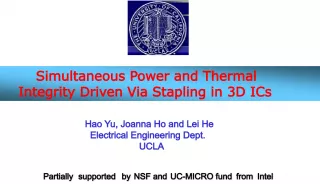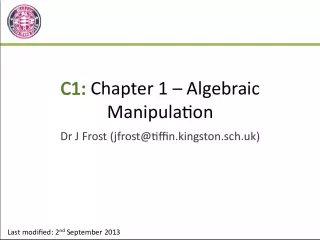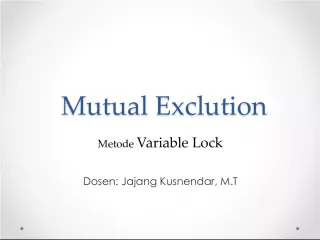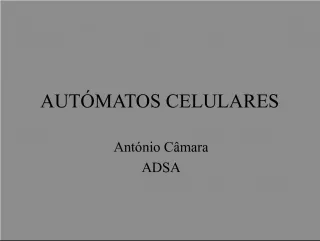Introduction to the Finite Volume Method for Gray BTE in Nanoscale Thermal Transport
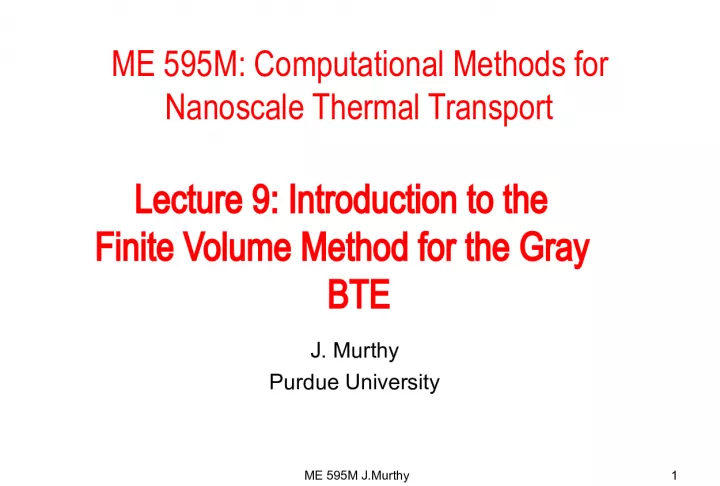

This lecture discusses the Finite Volume Method used for the Gray Phonon Boltzmann Transport Equation (BTE) in nanoscale thermal transport. It covers the concept of energy per unit volume per unit solid angle and its relation to direction vector, and how adding a net energy source affects the gray BTE.
- Uploaded on | 0 Views
-
 clarissa
clarissa
About Introduction to the Finite Volume Method for Gray BTE in Nanoscale Thermal Transport
PowerPoint presentation about 'Introduction to the Finite Volume Method for Gray BTE in Nanoscale Thermal Transport'. This presentation describes the topic on This lecture discusses the Finite Volume Method used for the Gray Phonon Boltzmann Transport Equation (BTE) in nanoscale thermal transport. It covers the concept of energy per unit volume per unit solid angle and its relation to direction vector, and how adding a net energy source affects the gray BTE.. The key topics included in this slideshow are Finite Volume Method, Gray Phonon BTE, Nanoscale Thermal Transport, Energy Source, Direction Vector,. Download this presentation absolutely free.
Presentation Transcript
1. ME 595M J.Murthy 1 ME 595M: Computational Methods for Nanoscale Thermal Transport Lecture 9: Introduction to the Finite Volume Method for the Gray BTE J. Murthy Purdue University
2. ME 595M J.Murthy 2 Gray Phonon BTE Recall gray phonon BTE: e is energy per unit volume per unit solid angle and depends on direction vector s . So there are as many pdes as there are s directions. In each direction, e varies in space and time The e values in different directions are related to each other because of e 0 in the scattering term: Notice that This implies that there is no net energy source scattering only shifts energy from one direction to another How would you add an net energy source to the gray BTE?
3. ME 595M J.Murthy 3 Overview of Finite Volume Method Divide spatial domain into control volumes of extent x y Divide angular domain into control angles of extent Divide time into steps of t - but will only do steady here for simplicity Consider gray BTE in direction s . Integrate gray BTE over control volume and corresponding control angle. Get energy conservation statement for that direction for each spatial control volume Do the same for all directions. Solve each direction sequentially and iteratively Back out temperature from e 0 upon convergence using s
4. ME 595M J.Murthy 4 Discretization Divide domain into rectangular control volumes of extent x and y. Assume 2D, so that depth into page (z) is one unit. Divide angular domain of 4 in N xN control angles per octant. Centroid of each control angle is ( i , i ), extents are ( , ). For each control angle i: Important: The directions s are 3D even though we are considering 2D x y y x z s
5. ME 595M J.Murthy 5 Discretization (contd) Control angle extent is In 2D, only directions in the front hemisphere are necessary. Thus ranges from 0- /2 and =0-2 Thus, increase control angle extent to: Define for future use:
6. ME 595M J.Murthy 6 Formula for S
7. ME 595M J.Murthy 7 Spatial Discretization P E N W S y x e w n s e stored at cell centroids
8. ME 595M J.Murthy 8 Control Volume Balance Integrate governing equation over control volume and control angle: faces f n s w e P s
9. ME 595M J.Murthy 9 Control Volume Balance (contd) Now look at RHS Collecting terms: Control volume balance says that net rate of energy entering the CV in direction s i must be balanced by net in- scattering to the direction i in the CV
10. ME 595M J.Murthy 10 Upwinding e is stored at cell centroids, but we need it on the CV faces Need to interpolate from cell centroid to face Can use a variety of schemes to perform interpolation Central difference scheme Second-order accurate, but wiggles in spatial solution Upwind difference scheme Computationally convenient to write P E W e
11. ME 595M J.Murthy 11 Discussion Upwinding, as shown, is only a first-order accurate scheme Guaranteed smooth, bounded solutions False diffusion In CFD, a variety of higher-order upwind-weighted schemes have been developed which typically involve other upwind points (P, W for face e) Will go with first-order upwind scheme for now. P E W e
12. ME 595M J.Murthy 12 Discrete Equation Using upwinding and collecting terms, we obtain an algebraic equation: We obtain one such equation for each grid point P for each direction i The b term contains e 0 iP Once we have boundary conditions discretized, we can solve the set
13. ME 595M J.Murthy 13 A Closer Look Consider a direction s i with s x >0, s y >0 Point p only connected to points south and west of it Influence of other directions in b term Influence of b term increases as acoustic thickness L/(v g eff )increases Diagonally dominant Other directions appear here
14. ME 595M J.Murthy 14 Coefficient Structure P E N W S e w n s
15. ME 595M J.Murthy 15 Discussion Prefer to solve iteratively and if possible, sequentially to keep memory requirements low For upwind scheme, diagonal dominance is guaranteed, making it possible to use iterative schemes Conservation of energy is guaranteed regardless of spatial and angular discretization Confirm that sum of all scattering source terms at a point is zero regardless of discretization Any linear solver can be used will use line-by-line tri- diagonal matrix algorithm (LBL-TDMA) for now.
16. ME 595M J.Murthy 16 Overall Solution Algorithm 1. Initialize all e i values for all cell centroids and directions 2. Find e 0 P for each point P from current e values. 3. Start with direction i=1 4. For direction i: Find discretized equations for direction i, assuming e 0 temporarily known Solve for e i at all grid points using LBL-TDMA Increment I as i=i+1 5. If (i.le.4*N *N ) go to 4 6. If (i>4*N *N ) check for convergence. If converged, stop. Else, go to 2.
17. ME 595M J.Murthy 17 Conclusions In this lecture, we discretized the gray BTE. The discretization is guaranteed to give energy conservation regardless of the fineness of the spatial or angular discretization The discretization guarantees diagonal dominance and is hence suitable for iterative solvers such as the LBL TDMA. The next time, we will talk briefly of boundary conditions, and start looking at a finite volume code to solve the BTE.


